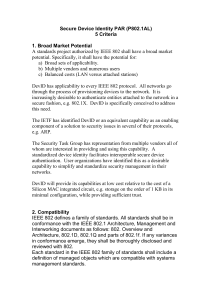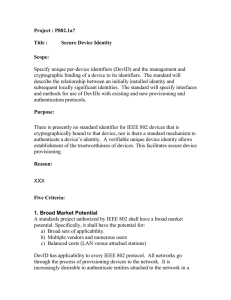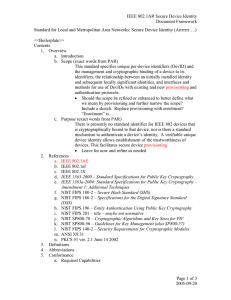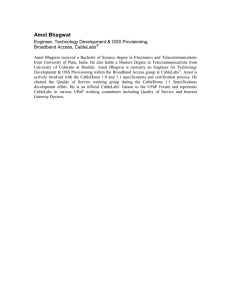Device identity
advertisement
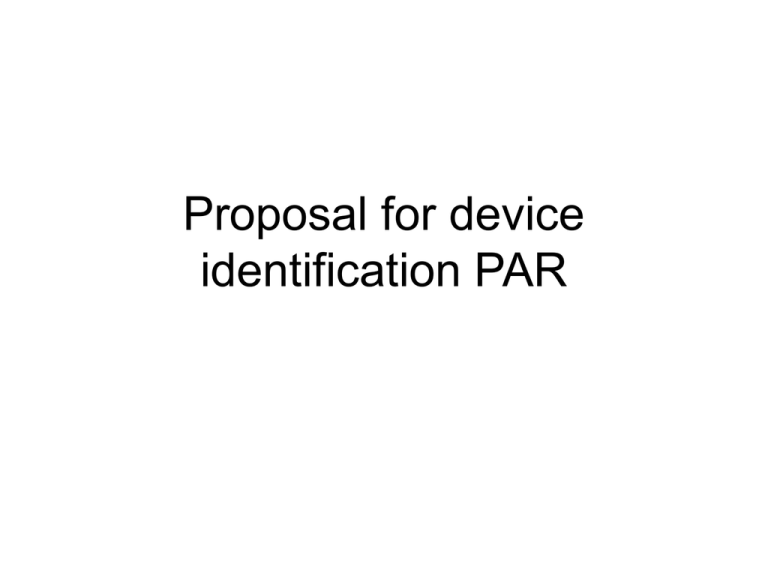
Proposal for device identification PAR Scope • Unique per-device identifiers (DevID) • Method or methods for authenticating that device is bound to that identifier – Abstract framework – Concrete protocol over 802.3 • Standards for establishing and maintaining vendor trust Rationale • Many ways to identify individuals • No standard ways to identify devices • MAC addresses are not sufficient – Multiple per device – Reconfigurable – Not cryptographically bound • Device identity is important for completing chains of trust – Window of vulnerability Uses • Network equipment provisioning • Authenticated key exchange in other protocols – E.g., 802.1af, 802.1X • • • • Inventory management Internal component identification LLDP chassis IDs … Market Potential • Any protocol requiring identification at layer 2 – Any authentication protocols • Applicable in bridges, routers, endstations, … • Consistent acquisition procedures across manufacturers • Cost should not be a barrier to adoption – Low incremental cost Compatibility • IEEE 802.1 standard • In conformance with – 802 overview and architecture – Existing standards within 802.1 and 802.3 • Managed objects will be defined consistent with existing policies and practices Relationship with other standards • No standards providing device identity within IEEE 802 • No such standards outside of IEEE • CableLabs DOCSIS – Not generally applicable (cable modem specific) – CableLabs is intermediary for deployment – CableLabs is not a standards body • IETF liaison letter in support of value PKI overview Manufacturer Device Key generation capability Key generation capability Certification Authority Private key Sign Certificate Root certificate Public Key Intention is that private key would not be exportable once installed DevID number Technical overview Vendor Credentials Device Device Identity Identity Management capability Analysis • No registration within IEEE required – Vendors can be their own root • Trust by reputation – Management vendors can aggregate credentials – Or, IEEE could outsource a PKI, e.g., to Verisign • Physical security of devices is a known threat – Some vendors will choose high security – Others will want to support hot-swapping • Hardware implementation cost small, not free – Available crypto capability • Cheap off the shelf solutions (including software) – 128 to 512 bytes of storage








